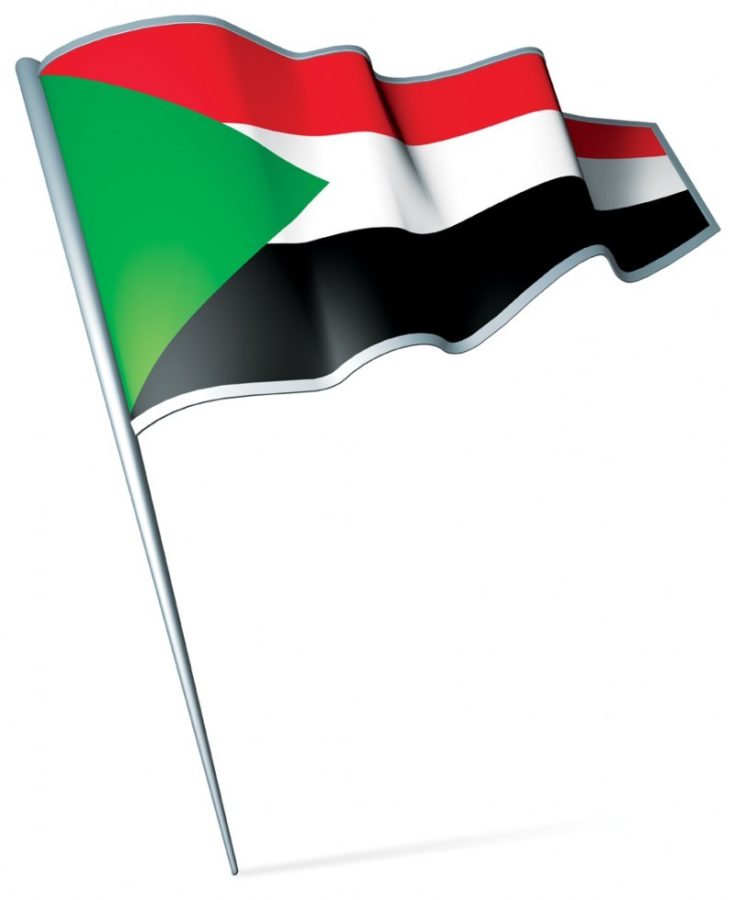Letter: Corrections on coverage of Sudan conflicts
Flag pin – Sudan
January 10, 2011
I applaud your coverage of the Sudan in the expanded issue of Dec. 13. In an article written by Katherine Marcheski, especially as it is happening at a critical time when new developments may soon alter the status of the country. I also applaud Maurice Aduto, the ISU student from South Sudan who was featured in that article, for sharing his unique life experience and for expressing lofty aspirations for himself and his homeland. However, the article had some factual errors. As a member of the ISU community who originally hails from the Horn region of Africa, I felt obligated to write this letter to correct those errors so that your readers are not misinformed.
Toward the beginning, the article states, “Sudan can’t provide anything more than an eighth-grade education.” That is not true. Sudan has had a system of primary, secondary and tertiary education going back to its colonial period under the British rule. The University of Khartoum, located in the capital city, is one of the oldest institutions of higher learning in the continent, tracing its origin to as far back as 1902 when it opened as the Gordon Memorial College. The college was upgraded in 1951 to become Khartoum University College affiliated with the University of London. It became a full-fledged university, as the University of Khartoum, in 1956 when Sudan gained its independence from Great Britain. The quoted statement was perhaps meant to refer to the specific locality in South Sudan where Maurice Aduto was born.
The conflict in the Sudan is described in the article as one between “Arab Muslim North and Black Christian South.” Such a dichotomy, though convenient, grossly oversimplifies the complexity of the North-South conflict in the Sudan. First, the Sudanese in the north are considered an integral part of “Black Africa” and not the Arab world, as is true of the other peoples in Horn region of Africa – the Eritreans, Ethiopians and Somalis. The fact that they are predominantly Muslims doesn’t necessarily make them Arabs. Second, the “Christian” designation of the South is a bit misleading. It ignores the fact that a sizable portion of the population also adheres to African traditional faiths. However, as will become clearer in the next paragraph, this is not to deny the fact that religion has been a factor in the conflict.
In a quotation attributed to Professor Richard Mansback, the article characterizes the conflict between North and South Sudan as, “Let’s be clear here, this is not a war between good and bad. This is a battle between bad and worse.” This is a bit puzzling. Who is the “bad” and who is the “worse” in the conflict? It would perhaps be helpful to describe the situation without assigning any labels and let readers make their own conclusion. On the one hand, there is the North-dominated central government of the Sudan currently headed by President Omar Hassan al-Bashir. His ruling party, the National Congress Party (NCP), like other North-dominated political parties before it, has been described as Islamic-oriented. When al-Bashir seized power through a military coup in June 1989, he began to impose Islamic (Sharia) laws throughout the country regardless of the religion of the residents. On the other hand, there is the people of South Sudan, who, as noted above adhere to Christianity and African traditional faiths. They have been not only resisting the imposition of Islamic laws but also rebelling against the North-dominated central government which they felt treated them as second-rate citizens. The rebellion in the South assumed a widespread armed resistance led by the Sudan People’s Liberation Movement (SPLM), and its armed wing, SPLA. (Incidentally, the SPLM was led by John Garang, who earned his master’s and Ph.D. degrees from Iowa State University in agricultural economics and economics, respectively, until his untimely death in a plane crash in July 2005.) The armed conflict went on for decades causing hardship and devastation in the South, forcing many southern Sudanese to migrate to neighboring countries, as was described by Maurice. The armed conflict came to an end with the signing of a Comprehensive Peace Agreement (CPA) in 2005 by the two parties through the mediation of the government of the United States.
In short, the North-South conflict in the Sudan has been between the North-dominated, Islamic-oriented central government continually imposing its belief and exerting its political domination, and the people in the South resisting the imposition and generally struggling to assert their right to self-determination under the leadership of the SPLM.
Toward the middle, the article states, “Omar Al-Beshir, president of South Sudan …” That is misleading. As mentioned above, Mr. Omar al-Beshir is president of the whole country of Sudan, not the South. And as the article correctly points out, he has been charged for war crimes committed in Darfur, another region of conflict in the Sudan. In fact, the International Criminal Court in the Hague has issued an arrest warrant for him, first in March 2009 and again in July 2010, for “war crimes and crimes against humanity” and genocide. Despite the arrest warrant, al-Bashir remains president of the Sudan. The president of South Sudan is actually Mr. Salva Kirr, who succeeded Dr. John Garang following his sudden death in 2005. Mr. Kirr also heads the SPLM and holds the title of vice president of the whole Sudan. All that may soon change however.
In according with the 2005 Comprehensive Peace Agreement, mentioned above, the people of South Sudan are entitled to hold a referendum, now scheduled to start on Jan. 9, 2011, to choose between becoming independent or remaining part of a unified Sudan. All indications are that the people of the South will opt for independence. Thus, a new African country may emerge, heralding a new beginning and providing new opportunities for Maurice Aduto and his compatriots.






